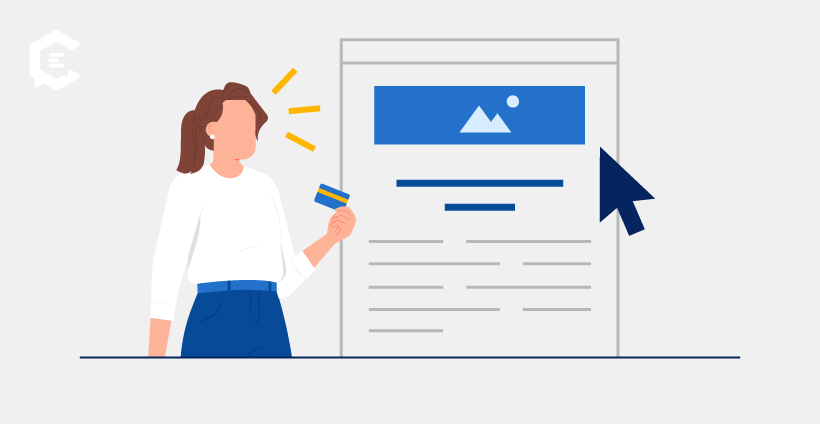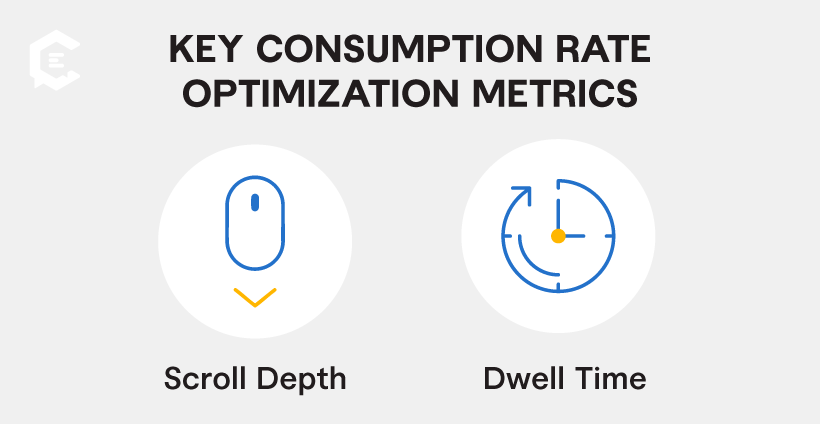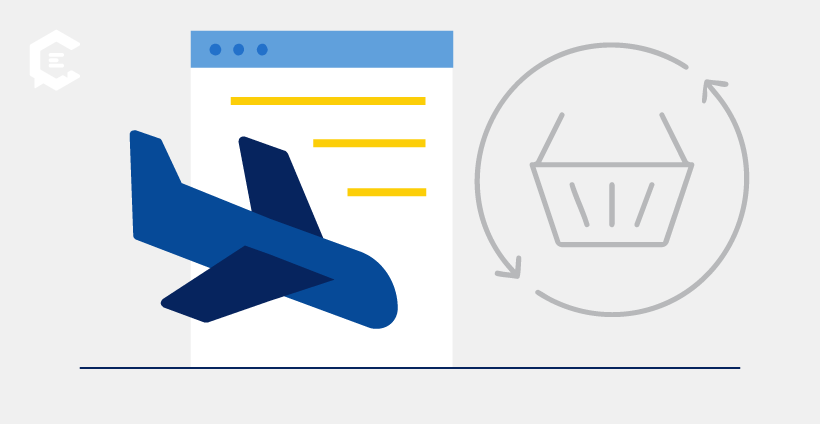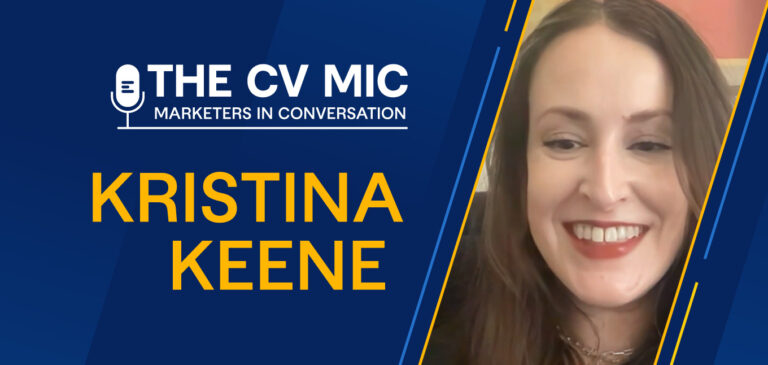When most leaders look at content performance metrics, they focus on conversion rate optimization (CRO). The idea is simple: improve the percentage of users who complete a desired action, like making a purchase or filling out a form.
As such, CRO is often seen as the go-to strategy for improving user experience (UX) and driving desired outcomes.
But Tas Bober, founder of B2B marketing consultancy The Scroll Lab, argues that buyer engagement is better optimized through consumption rate optimization. This concept centers on how much landing page content users actually consume — and how positive their experience is.
In this article, we’ll look at both CRO and consumption rate optimization, highlight the benefits of a consumption-first mindset, and share examples where improving user experiences led to higher conversions. By the end, you’ll know how to adopt a consumption-first approach for your own campaigns.
What Is Consumption Rate Optimization?
Consumption rate optimization is about maximizing how much of your content buyers actually consume by making your webpages engaging and educational for buyers.
While traditional conversion rate optimization focuses on pushing users toward an action, consumption rate optimization focuses on keeping buyers engaged with valuable, information-rich content, such as product details, case studies, testimonials, and pricing.
This way, users can better self-educate about your company and offerings, providing them with more incentive to interact with your content during their buyer’s journey. This also fosters trust through high-quality, valuable content, helping buyers justify their decisions internally, which can ultimately lead to more conversions.
How Consumption Signals Drive Smarter Campaigns
Understanding user engagement is key to effective consumption rate optimization. Bober advises focusing on consumption signals — metrics that show how and why users interact with content. These are called “leading indicators,” and they help you predict future behavior. This is in contrast to conversion data, which only measures past actions (called “lagging indicators”).
By studying consumption signals, you can discover what parts of a webpage generate high interest and which areas need to be adjusted to prevent confusion. You’ll also be able to identify key customer pain points by studying their behavior and which consumption signals indicate higher conversion potential.
Real-World Example: Consumption Signals in Action
So, how do you optimize your website’s consumption rate to increase your conversions? Bober shares an example where she analyzed a website’s engagement levels and found that 15% of its clicks came from the fourth question on its FAQ page.
In response, her team created a dedicated content block based on that question and answer — and conversions jumped up by 265%. Since the question dealt with an important issue for her target audience, creating more in-depth content around that topic encouraged buyers to engage more with the landing page, leading to higher conversions.
Why CRO Alone Isn’t Enough
Educating prospective buyers is critical for building trust and long-term relationships, especially in B2B. Buyers often need to research thoroughly and win over stakeholders before talking to sales or starting a trial.
That’s why CRO tactics like aggressive calls-to-action don’t always work. B2B buyers need time — and the right resources — to build a strong business case. Instead, Bober suggests making landing pages a resource hub. Since most buyers aren’t ready to book a demo immediately, your priority should be giving them the information they need to advocate internally.
Key Consumption Rate Optimization Metrics
When reviewing consumption data, two metrics stand out for gauging engagement: scroll depth and dwell time.
Scroll Depth
Scroll depth measures how far down a user goes on a webpage (e.g., 25%, 50%, 75%, or 100%) before leaving. It shows how much of your content people actually consume. If most users only reach halfway, they may be losing interest or not finding what they need.
These insights can guide content placement. Move high-value elements like testimonials to sections with the most engagement, or add content that addresses buyer pain points where interest tends to drop off.
Dwell Time
Dwell time is the length of time a user spends on your page after clicking a search result and before returning to the results page. Longer dwell times signal that users find your content valuable. Search engines also interpret this as a quality signal, boosting your SEO efforts.
Bober recommends increasing dwell time by making landing pages a one-stop resource. Include everything a B2B buyer might need — case studies, competitive comparisons, and pricing — so visitors have a reason to stay and explore, fueling purchasing intent.
Tools to Measure Content Consumption
What digital tools should you use to measure how consumers are interacting with your content? According to Bober, marketers should leverage heat maps and AI platforms when researching audiences.
Heat maps
Heat maps visually represent user activity on a page, using warm colors (like red) for high engagement and cool colors (like blue) for low. At a glance, you can see which areas capture attention, which links or buttons draw the most clicks, and how far the average visitor scrolls.
Some variations, like “hover maps,” even track mouse movements to reveal which parts of a page spark the most interest. Start with a free tool like Microsoft’s Clarity that gives you helpful heat map data like where your audience clicks and what they ignore.
AI platforms
AI platforms, such as ChatGPT, can help you create content that’s both valuable and easy to consume — if you provide the right context. Bober cautions against generic drafts that don’t fit the needs or expectations of your audience. B2B buyers often need detailed examples and in-depth explanations to make informed decisions.
For example, if your target audience needs a lot of details and specific examples to make purchasing decisions, they’ll be skeptical if your landing page offers only easy-to-read content and minimal information.
You can also use AI to research how your audience prefers information delivered. Once you know their reading level and tolerance for technical detail, you can prompt AI tools to produce content tailored to those preferences.
Framework for Adopting a Consumption-First Mindset
Ready to optimize your consumption rate? Bober outlines a four-step process for building landing pages that optimize consumption.
Step 1: Gather baseline consumption data
Use Google Analytics to track metrics like scroll depth and dwell time to see how much users engage with your content. Heat maps can also highlight which areas draw the most (and least) attention.
Step 2: Identify drop-off points
Pinpoint where engagement stops. How far do users scroll before losing interest? How quickly do they exit? How long do they watch videos before dropping off?
These insights reveal where your content isn’t holding attention or addressing buyer pain points. Replace weak sections with stronger elements like case studies and testimonials to re-engage visitors.
Step 3: Optimize for ease of consumption
Make content easy to digest with jargon-free language, short sentences, and clear structure (headings, subheads, bullet points).
However, it’s equally important to study user preferences and tailor your content to their needs. If you discover your target audience values PDF downloads with long-form, in-depth explanations about your product and its benefits, then this is the type of content you should provide on your website.
Step 4: Connect consumption signals to conversion outcomes
Knowing where content engagement is highest tells you exactly where to implement conversion signals.
For example, if heat maps show strong activity at a certain scroll depth, add a call-to-action or a link to deeper content on a related pain point. Meeting buyers with relevant information where they’re most engaged makes them more receptive and more likely to convert.
Improve Content Performance With Consumption Rate Optimization
Rich, in-depth content, like case studies, testimonials, and detailed product information, turns your landing page into a trusted resource. This motivates B2B buyers to return, engage, and build stronger cases for choosing your solution.
That approach is far more effective than relying on short forms and buttons. Since B2B buyers rarely make impulsive decisions, they need content that helps them make informed choices, earn stakeholder buy-in, and move confidently toward conversion.
Need help optimizing your consumption rate? Connect with a ClearVoice content specialist and learn how we can improve your content strategy to increase conversions today.






